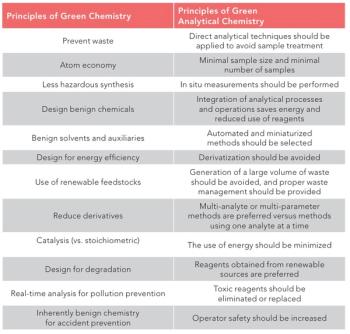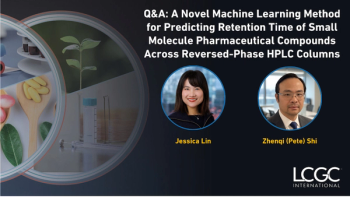
Best of the Week: SFC Method Lifecycles, Portable LC, and More
Here are the top five articles published on LCGC International this week.
This week, LCGC International published a variety of articles on the hottest topics in chromatography and beyond. Below, we’ve highlighted some of the most popular articles, according to our readers. Happy reading!
Alasdair Matheson
Claudio Brunelli has more than 20 years of experience in Analytical Research and Development in Pharmaceutical industry, and is a separation scientist supporting chromatographic method development, method troubleshooting, validation and transfer to quality control (QC). He also covers other areas such as forced degradation and drug stability. During his years at Pfizer R&D UK in the Analytical R&D department Claudio worked on implementing new technologies within analytical development workflows, including hyphenated technologies and detectors, including 2D LC–MS, GC–MS, SFC–MS, HILIC, CE, cCAD, and more recently also computational predictive packages, such as QSRR, degradation predictors, solubility predictors, separation software packages, and automation. Claudio has recently accepted a role with Novartis R&D in the RadioLigand Therapy line taking onboard the analytical challenges of the peculiar pharmaceuticals. At HTC-18 in Leuven, Executive Editor of LCGC International, Alasdair Matheson, spoke to Claudio Brunelli following his talk, entitled “Analytical Method Lifecycle of SFC Methods from Development to QC and Commercialization in Pharmaceutical Development.”
Alasdair Matheson
Professor Brett Paull is a University of Plymouth (UK) B.Sc. (Hons), Ph.D. (1994) and D.Sc. (2013) graduate, in the fields of environmental and (bio)analytical chemistry. Brett is a Professor of Analytical Chemistry within the School of Natural Sciences, at the University of Tasmania (UTAS), and Director of the ARC Training Centre for Hyphenated Analytical Separation Technologies (HyTECH). At HTC-18 in Leuven, Executive Editor of LCGC International, Alasdair Matheson, spoke to Brett Paull from the University of Tasmania and HyTECH about his talk, entitled “Analytical Performance and Disruptive Potential of Fully Portable Portable and Field Deployable LC–MS Technology.”
John Chasse
Although automated peak detection functionalities are available in commercially accessible software, utilizing visual inspection and manual adjustments to achieve optimal true positive rates is often necessary. A recent study conducted by the Department of Chemical Engineering at the Indian Institute of Technology (Delhi, India) used liquid chromatography-mass spectrometry (LC–MS) to distinguish hetero-variants (glycoforms) resulting in a monoclonal antibody (mAb) able to be characterized, revealing discernible peaks at the intact level. LCGC International spoke to Anurag Rathore, corresponding author for the article, about his department’s findings.
John Chasse
A recent study assessed the ease of applying shotgun proteomics to blubber biopsy samples collected from free-ranging baleen whales as well as proteins extracted from that blubber. Those proteins were separated and identified using nanoflow liquid chromatography electrospray ionization in tandem with mass spectrometry (LC–ESI-MS). According to the study, which was published in Conservation Physiology, the value of creating a suite of such protein biomarkers is that there is the potential of better assessing the overall health and physiological state of live whales through remote biopsy sampling. This information is vital for population health assessments to predict population trajectories and can ultimately guide and monitor conservation priorities and initiatives.
Aaron Acevedo
Cigarettes and cigars have been important parts of the global consumer goods market. Cigars have complex aroma components, which define the flavor profiles and play a crucial role in consumer decision-making. Medium to high-end cigars hold unique aroma profiles that are mainly influenced by fermentation and the inherent qualities of tobacco leaves. These aroma components, such as aldehydes, ketones, esters, and alcohols, are formed during the tobacco’s creation and released when smoked. In a study led by scientists from Shanghai Jiao Tong University in Shanghai, China and the Sichuan China Tobacco Industry Company in Chengdu, China, gas chromatography-ion mobility spectrometry (GC-IMS) was used to analyze the flavor profiles of six different types of Great Wall cigars.
Newsletter
Join the global community of analytical scientists who trust LCGC for insights on the latest techniques, trends, and expert solutions in chromatography.




